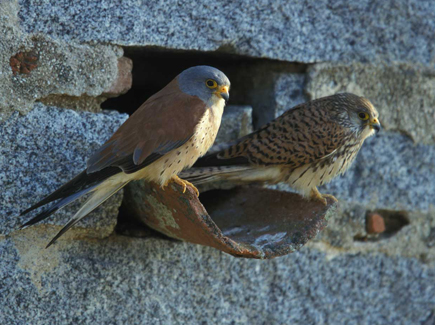What is the situation of the population of Lesser kestrels in the Balkans and in other European countries, and how can these elegant birds of prey be effectively protected? At the beginning of October, 54 experts from 11 countries met to exchange ideas at a Workshop in Bulgarian Plovdiv, which was organized by EuroNatur partner Green Balkans.

Lesser kestrels are among the most threatened birds of prey in Europe.
© Dietmar NillThe participants discussed the question of how land use, and in particular the application of pesticides on farms affected the numbers of Lesser Kestrels. In addition, the conservationists exchanged hands-on experiences on technical issues like breeding, hacking and tracking techniques. But also practical experiences were not neglected. The participants went on an excursion and visited, among others, the Lesser Kestrel Adaptation and Release Module in Levka, in the Sakar hills. Since 2013, 362 young birds from the captive breeding program have been released out into the wild there. In addition there are also 62 more young falcons which have been hatched by the released birds between 2014 and 2016.
The release program is part of the LIFE+ project "Better Chances for Lesser Kestrels in Bulgaria." Together with Green Balkans and the Spanish conservation organization Dema, Euronatur is engaged in this project to reintroduce these falcons, which are now extinct in Bulgaria, in the Sakar hills.


